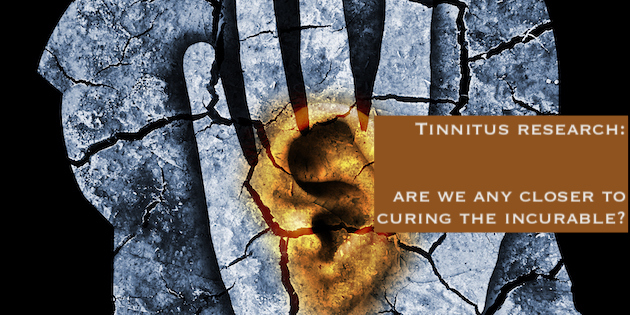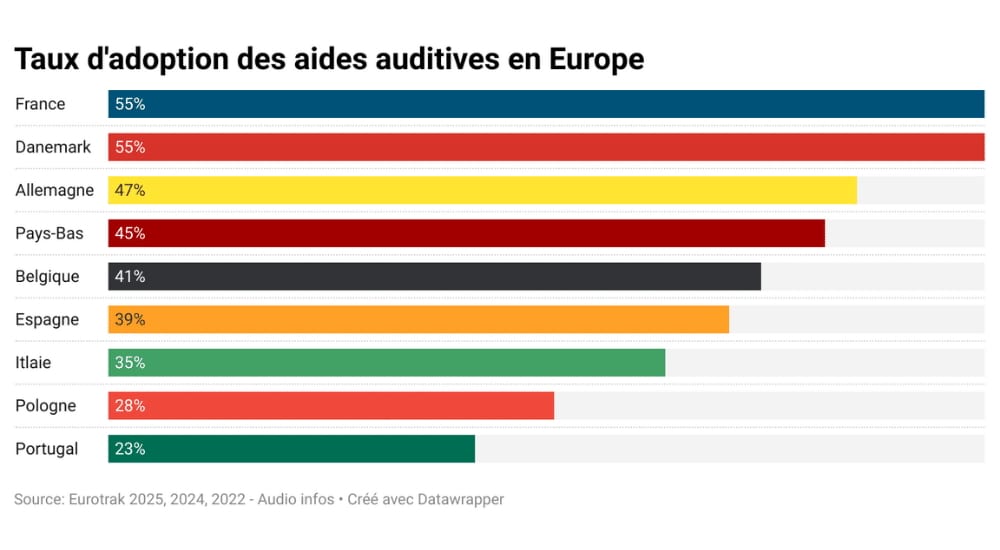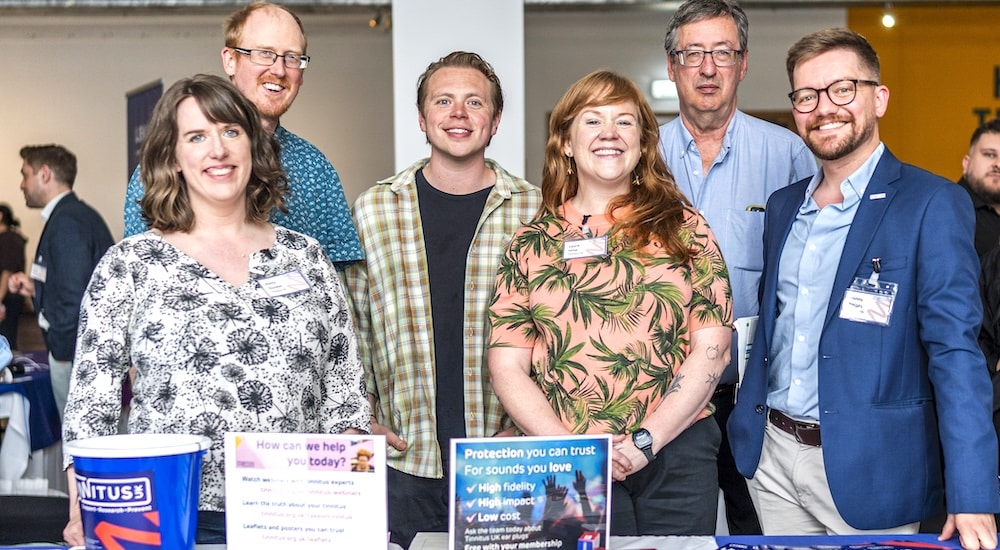Tinnitus research: are we any closer to curing the incurable?
Nic Wray, one of the leaders of the charity Tinnitus UK, provides an essential synthesis of the current position of underfunded but urgently needed tinnitus research.

Tinnitus, a condition characterised by the perception of sounds in the ears without any external source, affects around 750 million people worldwide. Despite its prevalence – estimated between 5.1 and 42.7% – and impact on quality of life, tinnitus research has historically received up to forty times less funding than comparable conditions such as chronic pain, depression and anxiety. [McFerran, Stockdale et al, 2019] This lack of investment led to some assuming minimal progress has been made in understanding and treating tinnitus.
THE STATE OF TINNITUS RESEARCH
The June 2023 Tinnitus Research Initiative (TRI) conference in Dublin showcased the innovative research conducted by academics and clinicians, even under the challenging circumstances of the last couple of years. At the TRI conference, most of the presentations and posters fit into three broad streams: basic science, devel- opment of treatments and management techniques, and patient experience.
While a cure is the focus of attention for people living with tinnitus, there are many barriers preventing the finding of a cure – or cures. [McFerran, Stockdale et al, 2019].
Basic science: Unravelling the mechanisms
The understanding of tinnitus mechanisms and neuronal activity patterns has increased greatly, but there remains no definitive explanation for the causes, propagation and mechanisms of action of tinnitus.
BRAIN SIGNALS
One mechanism for tinnitus suggests that it is a result of neuronal activity not responding appropriately (maladaptive neural plas- ticity). One form of this is noise-induced reduction of cortical inhibition, where inhibitory neurons do not fully prevent other neurons firing messages. Shaowen Bao presented a neuroin- flammation and neurodegeneration model of chronic tinnitus based on studies in mice and rats. TNF-# and calpain signalling pathways appear to be involved in noise-induced tinnitus and that blocking them improved the tinnitus.
TENSOR TYMPANI MUSCLE INVOLVEMENT
Arnaud Noreña discussed the contribution of the middle ear and trigeminal nerve on tinnitus and hyperacusis, concluding that tensor tympani muscle (TTM) contraction is present in many subjects with tinnitus.
AI
Artificial intelligence (AI) is very much a hot topic in many fields currently, and tinnitus is no exception.
BIOMARKERS
Biomarkers are molecules found in blood, other bodily fluids or tissues that are a sign of particular processes, conditions or diseases. AI is being used in a study at Macquarie University (supported by Tinnitus UK) to search for biomarkers for tinnitus. A small study using a combination of cortical auditory evoked potentials, brain signal variability and cognition as biomarkers for tinnitus has shown promising results.
COMPUTATIONAL MODELLING
Computational models of tinnitus use digital simulations to allow researchers to investigate their hypotheses. As modelling learns and refines its models, these may help bring together findings from different studies and help categorise potential sub-types of tinnitus. As each tinnitus sub-type may respond to treatments in a different way, studies on a homogeneous rather than a heterogeneous cohort may identify more effective treatments. Additionally, the use of computational modelling in developing personalised management techniques shows promising potential.
Management techniques: stepping stones towards relief
Whilst people living with tinnitus are anxiously hoping for a cure to be found, there is also widespread dissatisfaction with current treatment and manage-ment options.
Cognitive Behaviour Therapy (CBT) is often cited as the most efficacious of current tinnitus treatments, but access to this form of treatment can be limited in availability or expensive to access. Gerhard Andersson in his key- note presentation provided an overview of the research into internet-based CBT conducted in different countries and concluded that the early positive findings from Sweden [Andersson, Bergström et al, 2008] have been repli- cated and that internet-based CBT has an effect in reducing tinnitus distress [Weise, Kleinstäuber, Andersson, 2016] [Beukes, Baguley et al, 2018] [Beukes, Andersson et al, 2022]. As internet-based CBT can be delivered to greater numbers at reduced cost, this should mean that more people can be helped. Similarly, the teams behind mobile ‘apps’ which use a CBT component, such as Tinnibot and SilentCloud, claimed that using these apps have also shown positive results.
SOUND THERAPIES
Sound therapies are still attracting attention, and progress is being made in characterising those people who are likely to respond. Novel apps are also being used to deliver sound therapy, and results were shared from two studies. One study from the University of Newcastle reported promis- ing results from phase-modulated online sounds. Another study from the team at Widex showed that tinnitus patients who used sound therapy for more hours a day than others, had improved outcomes. Those that listened to fractal tones (unpredictable harmonic and melodic tones) had a greater improvement in Tinnitus Handicap Inventory (THI) scores over those who used nature sounds, or a combination of nature and fractal sounds.
NEUROMODULATION; DEEP BRAIN STIMULATION
Advancements in neuromodulation techniques offer hope for improved management strategies, with Neuromod presenting the positive results of their latest study into their Lenire device. Transcranial Direct Current Stimulation (tDCS) was the subject of several presentations, with overall inconclusive and contradictory findings. Consistency of treatment delivery and use of a core set of outcome measures remains an issue for this experimental treatment. Also discussed was deep brain stimulation of the thalamus for tinnitus. This invasive technique for severe tinnitus is planned to be performed on a small cohort of six patients. The results from the first patient treated in this way are promising, but of course, the findings need to be treated with caution.
Neuromod Devices Neuromod presented the positive results of their latest study into their Lenire device, which combines mild electrical pulses to the tongue with sound stimulation to treat tinnitus.
Living with tinnitus: the impact on and of lifestyle
There were surprisingly few presentations looking at the impact of tinnitus on those living with the condition. Deborah Hall looked at the problems reported by tinnitus patients in mainland China. She showed that the biological and psychological characteristics of tinnitus, as well as socio-environmental factors such as friends, family and support networks are influenced by socio-cultural factors, including beliefs and values. The reliance on Western-based concepts and questionnaires raises important questions about their validity for diverse cultural contexts. Exploring these cultural nuances is an intriguing area of study that holds the potential for a more holistic understanding of tinnitus worldwide.
EFFECT OF TINNITUS ON COGNITIVE FUNCTION
Petra Brüggemann discussed the effect of tinnitus-related distress on cognitive function and concluded that higher levels of distress led to poorer performance across a range of cognitive tests, although age, education level and depressivity also had an impact on cognitive functioning.
NW Petra Brüggemann delivers her study at Trinity College Dublin.
SLEEP AND TINNITUS
It is known that tinnitus can impact on sleep quality. However, Robin Guillard demonstrated that napping may also increase tinnitus loudness upon wakening, and that this is related to nap time duration. Whilst napping may exacerbate tinnitus, a study from Hasselt University showed that people who undertook vigorous or moderate physical activity were significantly less likely to experience tinnitus, and that this risk reduced with every hour of physical activity. However, sitting for more than seven hours per day increased the risk of tinnitus by 92.1%. Smoking, ageing, an increase in BMI and noise exposure also increased the likelihood of developing tinnitus. Understanding these lifestyle factors will contribute to developing tailored strategies for individuals with tinnitus and hopefully lead to better outcomes.
Conclusion: progress, challenges, and the way forward
Although progress in tinnitus research has been steady, it has been hindered by limited investment. We are waiting for that groundbreaking discovery that will lead to the much-wanted cure, but transformative research needs substantial financial support. As stressed in one of the Conference’s keynote panel discussions, the future of tinnitus research lies in collaboration between academia, industry, clinicians and those with lived experience of tinnitus, breaking down silos, and exploring novel avenues with creativity and curiosity.
CITIZEN SCIENCE,…
The rise of citizen science, big data from biobanks and shared resources and collaborative multidisciplinary projects all have potential to drive progress. Ultimately, the tinnitus community looks forward to sharing positive developments at the next TRI Conference in Vancouver in 2024.
REFERENCES:
Andersson G, Bergström J, Buhrman M, Carlbring P, Holländare F, Kaldo V, Nilsson-Ihrfelt E, Paxling B, Ström L, Waara J. Development of a New Approach to Guided Self-Help via the Internet: The Swedish Experience, Journal of Technology in Human Services 2008 26:2-4, 161-181, DOI: 10.1080/15228830802094627
Beukes EW, Andersson G, Allen PM, Manchaiah V, Baguley DM. Effectiveness of Cognitive-Behavioral Ther- apy for Tinnitus: Randomized Controlled Trial.
Beukes EW, Andersson G, Fagelson M, Manchaiah V. Internet-Based Audiologist-Guided Cognitive-Behavio- ral Therapy vs Face-to-Face Clinical Care for Treatment of Tinnitus: A Randomized Controlled Trial. JAMA Otolaryngology-Head & Neck Surgery. 2018 144(12): 1126-1133 DOI: 10.1001/ jamaoto.2018.2238
McFerran DJ, Stockdale D, Holme R, Large CH, Baguley DM. Why Is There No Cure For Tinnitus? Frontiers in Neuroscience 13 2019. DOI: 10.3389/fnins.2019.00802
Weise C, Kleinstäuber M, Andersson G. Internet-Delivered Cognitive-Behavior Therapy for Tinnitus: A Randomized Controlled Trial. Psychosomatic Medicine 2016 May; 78(4): 501-10. DOI: 10.1097/PSY.0000000000000310
Source: Audiology News UK issue 03 July-August 2023









